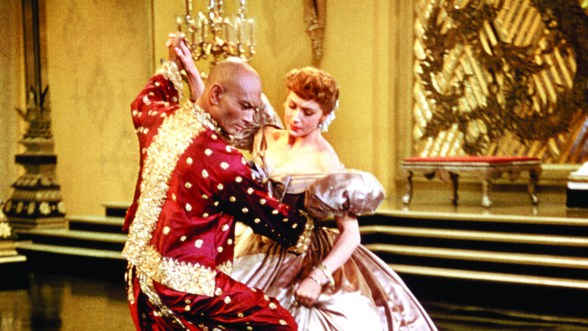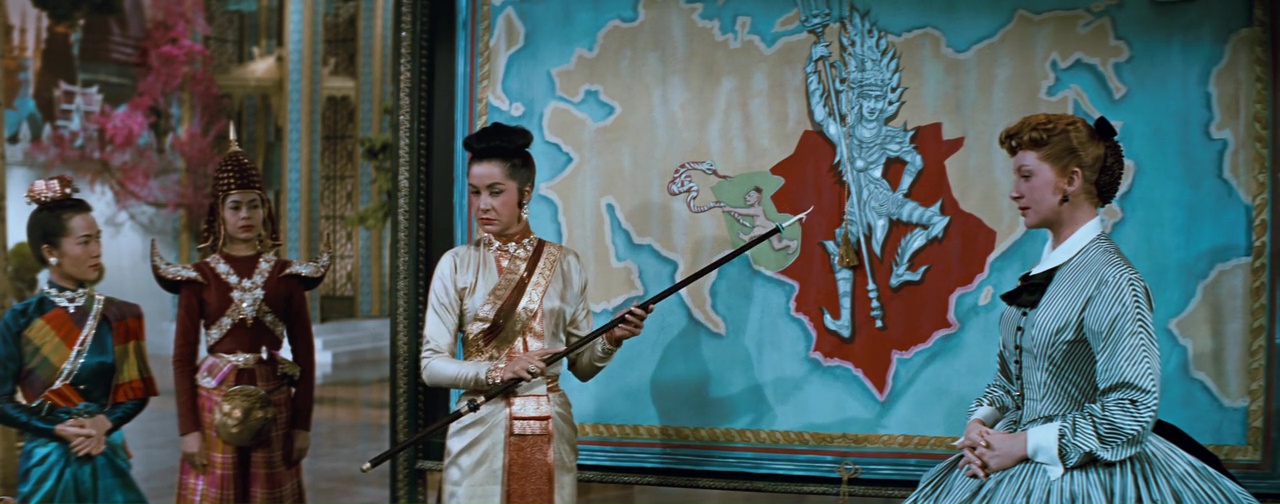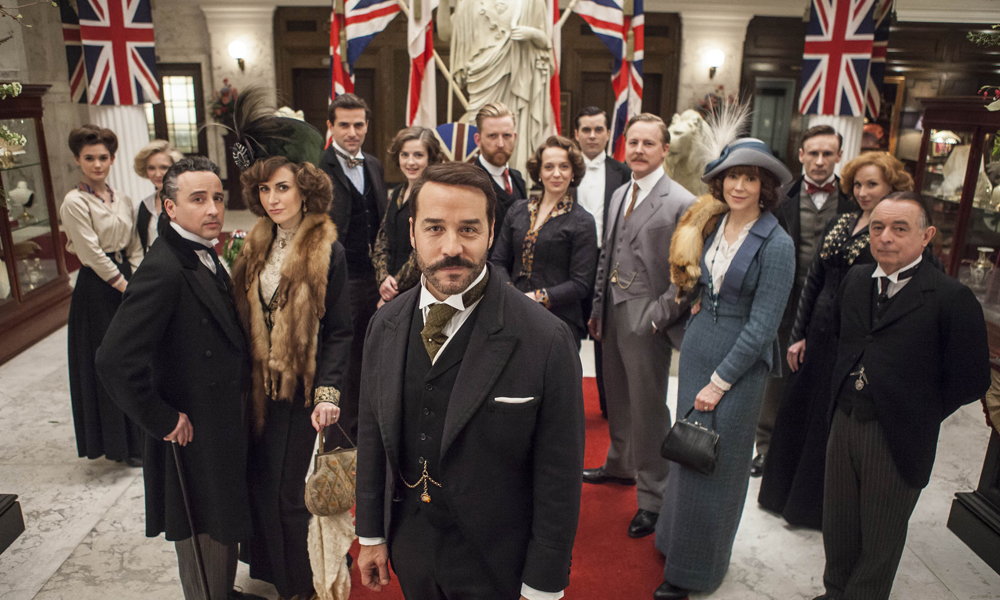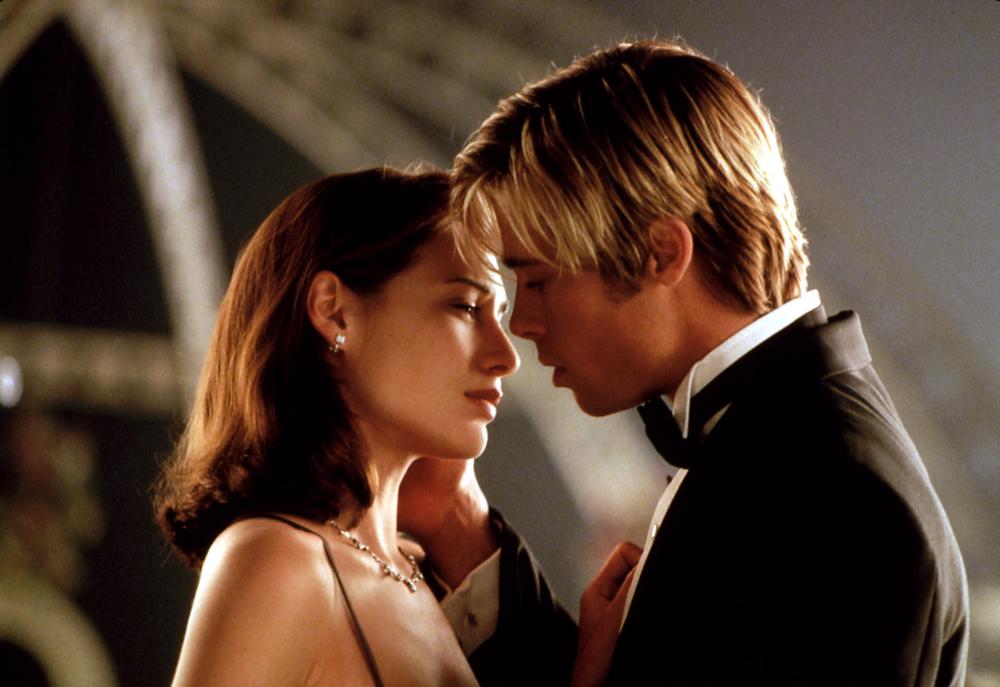The weather is growing cooler and the nights are
growing shorter; that can mean only one thing; autumn is on its way and summer
vacation is reaching its inevitable end. In keeping with the season, this week’s
review will focus upon a tale of teachers and students that reminds us that we
all could learn a lesson or two no matter who we are or how old we grow.
Combining the elements of the biography and musical genres, 1956’s The King and I is a sumptuous feast for
the senses that is also a study of cultural and gender clashes. Featuring
powerhouse performances from Yul Brynner and Deborah Kerr, and an iconic Rogers
and Hammerstein score The King and I
is an example of the movie musical at its most entertaining, which continues to
teach and inspire audiences sixty years after its release.
The story begins in 1860’s Bangkok as English widow
Anna Leonowens (Kerr) arrives to assume her new position teaching English to
the many children of King Mongkut (Brynner). Although she experiences culture
shock upon entering Siam, willful Anna refuses to adhere to the local cultural
norms, which demand subservience from women. She even goes so far as to argue
with the king when he breaks the terms of her contract and refuses to provide
her with a residence adjoining the palace for her and her young son (Rex
Thompson). Despite her initial difficulties, however, Anna becomes devoted to her
work and teaches both the royal children and harem lessons that extend far
beyond the facts and figures of the classroom. Although the two continue to
question the mores and values of each other’s cultures Anna and the King form a
begrudging respect for one another as she comes to admire his progressive
ambitions and he learns to appreciate her independence and intelligence. As
time goes on, Anna even takes on the role of advisor to the King as he consults
her in his efforts to modernize his nation. The delicate balance between
teacher and ruler is put to the ultimate test, however, when the pair is faced
with conflicts both foreign and domestic that bring their fundamental
differences to the fore.
What makes The
King and I stand out amongst other classic musicals is its approach to its
subject matter, which seemed to defy every standard set for the genre. While many
musicals of the era utilized plot merely as an excuse to showcase elaborate
song and dance numbers, the music in The
King and I serves as a means of enhancing the story, which remains the film’s
central focus. Similarly the characters are all written with depth and sympathy
in a way that avoids the black and white characterizations that were so prevalent
in early musicals. Furthermore, the film avoids genre clichés by focusing upon
the complicated friendship between Anna and the King, rather than forcing the
pair into a forced, conventional Hollywood romance and finishes on a hopeful,
but still far from happy, ending.
Perhaps the film’s greatest strength, however, is its
emphasis upon education as a means of both personal and societal growth.
Throughout the film, the King declares his intention that Siam become a modern
nation and wisely recognizes that education is the best means of achieving this
goal. The film takes this notion a step further by showing that in spite of
their many cultural differences, the one thing that truly sets modern and
independent Anna apart from her tradition-bound charges is her education, which
has provided her with the knowledge and skills to build a life for herself as a
single mother in a distant land. Similarly the King’s tireless efforts to
further educate himself remind us that learning is a lifelong necessity and the
crucial starting point in changing the world around us. While the film does not
feature the genre staples of inner city youth, test scores, or administrative interference,
The King and I is a testament to the
enduring value of education in all its forms.
The film’s star studded cast ensured a successful transition
from stage to screen by breathing fresh life into the well-known tale. Rita
Moreno brings a haunted quality to her unwilling concubine in her portrayal of Tuptim’s
isolation as a foreign consort in the King’s harem. Similarly Carlos Rivas
infuses Lun Tha with depth as he highlights the dignitary’s conflict between
his love for Tuptim and his duty to his country. Terry Saunders lends warmth
and intelligence to her role as the King’s head wife, Lady Thiang and Martin
Benson is appropriately formidable as the King’s traditionally-minded right
hand man, Kralahome. Deborah Kerr’s Anna is a woman who is truly ahead of her
time as she infuses Anna with an endearing combination of warmth, dignity,
charm, and ferocity that leave little wonder as to how she is able to win over the
King, his children, and his harem while still remaining true to herself. Yul
Brynner is in short made for his role as King Mongkut as he brings the role he
originated on Broadway to life in all of its nuance and complexity. Even as he continually
expresses views and makes decisions that are in direct contrast with today’s mores
and social advancements, Brynner’s charisma, ironic humor, and commanding presence
ensure that his King remains a character audiences can’t help but root for.
Through its combination of signature songs,
captivating performances and thought provoking story, The King and I is a prime example of the magic of the movie
musical. Through its dazzling costumes and sets the film successfully
transports viewers to 1860’s Bangkok, while its layered performances and well
written script ensure that there is plenty for modern audiences to ponder and
relate to. With a score including such Broadway standards as “Getting to Know You”,
“Hello Young Lovers”, and “Shall We Dance” the film will be sure to have you
tapping your toes before the final credits role. Through its musical journey
into the importance of education The King
and I is a film that belongs on every teacher and student’s back to school
list.
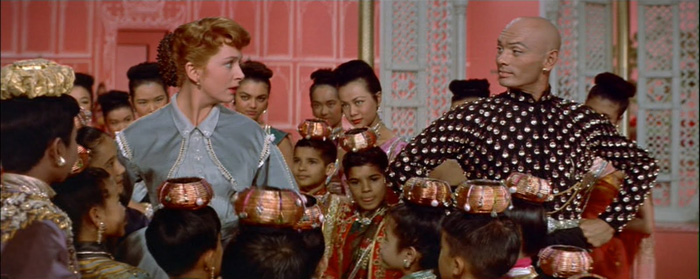 |
| 106 children...and you thought modern classes were too big! |

